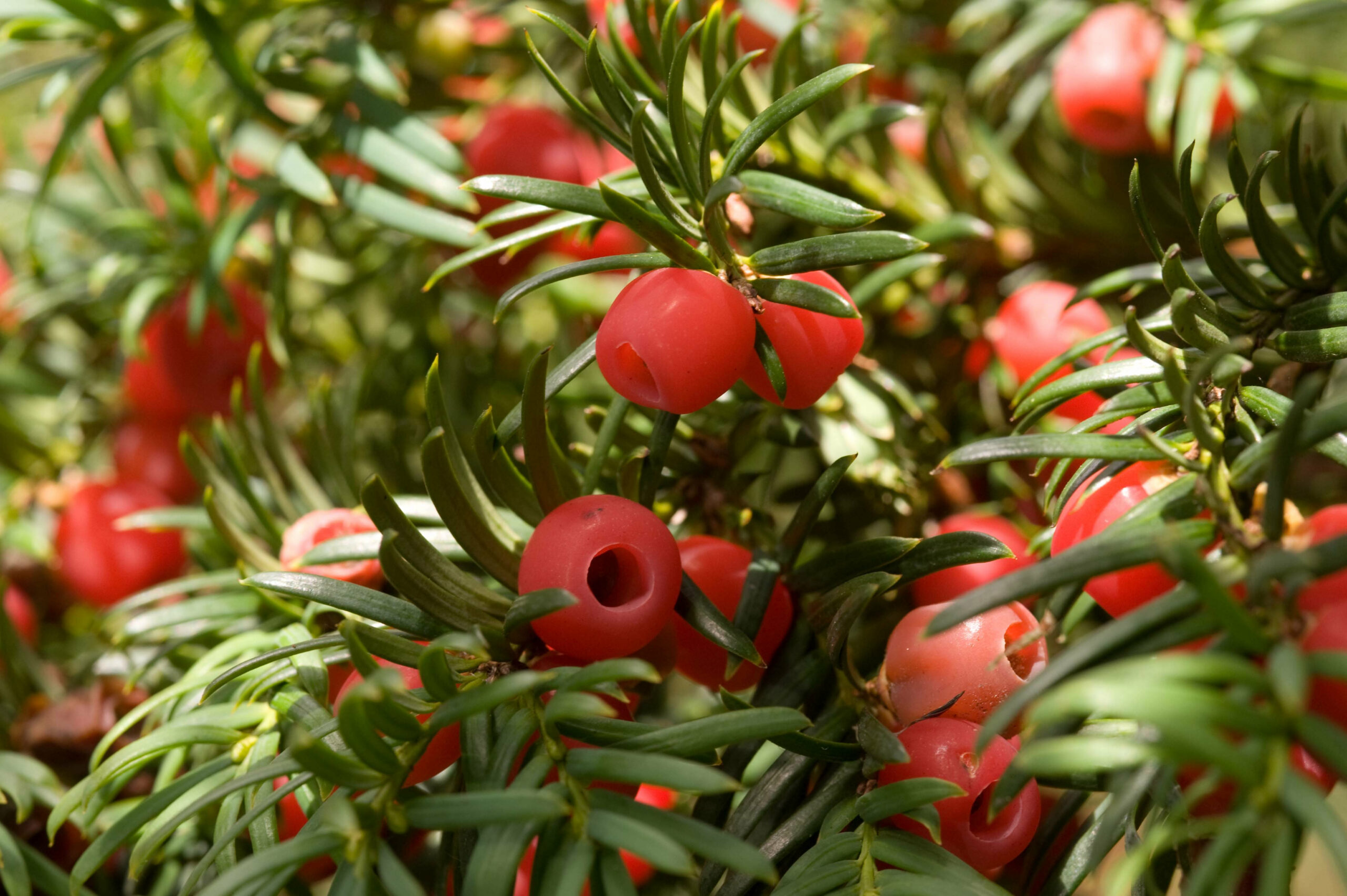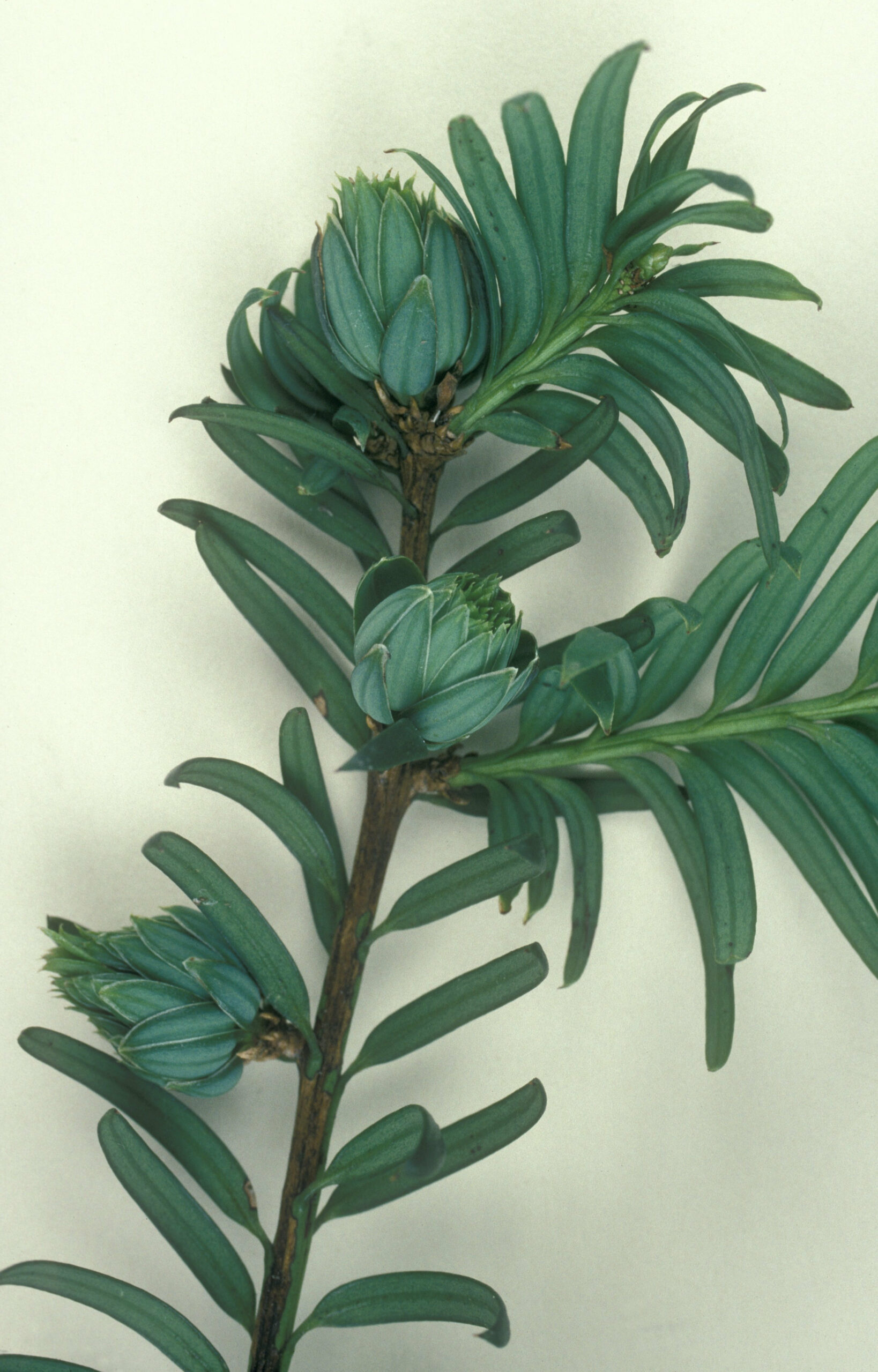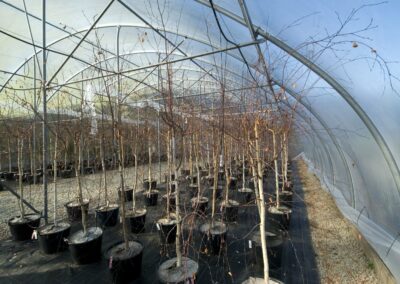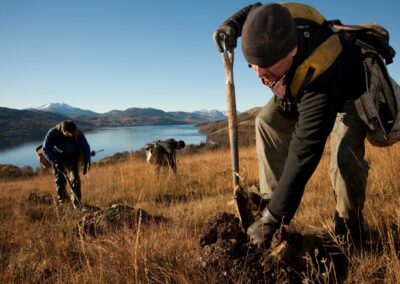Researching complex yew decline
Project leads Dr Caroline Gorton | Forest Research; Prof Robert Jackson | University of Birmingham; Dr Andrew Hirons | University Centre Myerscough
Lead organisation Forest Research
Project status Active
Project funding 25-26 £47,707
Research outcome Adaptation
Context
A gradual but significant decline of ancient yew (Taxus baccata) trees has been observed in the south of England in recent decades. No disease-causing organisms have been definitively linked to the decline syndrome, although the level of larval galls, caused by the the larvae of the yew gall midge (Taxomyia taxi), is often high.
This project aims to collect data that will improve understanding of the relationship between the condition of the yew trees, their soil, and microbiome. Study sites will be chosen based on the severity of yew tree decline, and in some cases because apparently healthy trees are also present. The sites will also be distributed across England.
Research aims and objectives
Aim:
To assess the condition of yew trees, record their growth responses to moisture availability, analyse the nutrient levels of their soil, and characterise the microbiome.
Objectives:
- Map the geographic distribution of yew tree decline in selected populations.
- Characterise the soil conditions and microbiomes that support both healthy and declining yew tree populations.
- Develop management practices that support yew tree populations.
Expected outcomes
- Data will be produced to improve understanding of the factors causing yew trees to decline.
- A report will be produced summarising the current status of yew tree decline.
- Subject to additional funding, a timeline of the decline will be developed through a further two years of monitoring.
Further resources linked to this project
Blog: Geoff Monck's Mission to Save The Yew
Geoff Monck, one of the researchers on this project, has written a blog about his experience of working with ancient yew trees, and how he became a researcher with the Centre for Forest Protection. Read the blog here: Geoff Monck’s Mission to Save the Yew.
Larval galls from yew gall midge developed from buds.
Title image: Crown Copyright. Forestry Commission – Isobel Cameron;
Body image: Crown Copyright. Forestry Commission – George Gate
Glossary & Key Terms
Larval galls
Abnormal plant growths, often called swellings or deformities, which develop as a result of insect larvae feeding on plant tissue.
Microbiome
The microorganisms, including bacteria, fungi, and viruses, which live in a particular environment.
Yew (Taxus baccata)
One of the oldest living trees in northern Europe, yew is one of the three conifers native to Britain alongside Scots pine and juniper. Unlike other conifers, yew trees grow succulent (but poisonous) red fruits instead of cones. For more information, see Yew | Tree species | Forestry England
Yew gall midge (Taxomyia taxi)
An insect whose larvae cause galls (abnormal growths) on yew trees. These galls typically develop from buds and are frequently observed in areas where ancient yew trees are experiencing decline.
Share this project on social media
Related Projects
Our Partners
Social media
Explore
Newsletter
Contact
© 2022 Centre for Forest Protection. All rights reserved.



